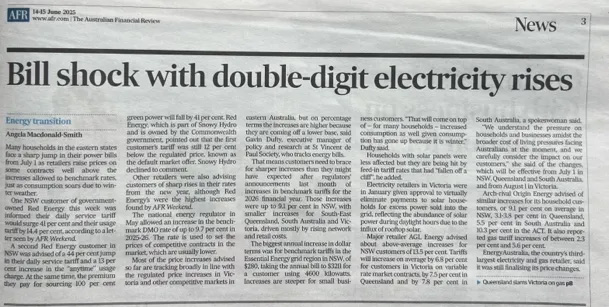
Nearly three dozen countries have legally binding targets to achieve net zero. The list has some notable countries including Russia and Ukraine. In addition, Nigeria, the European Union, Canada, and the Republic of Moldova, have all pledged to slash their carbon dioxide emissions to zero over the next two decades or so.
While all of these countries are mouthing the words about net zero, none will come anywhere close to achieving zero emissions for the simple reason that the goal can’t be achieved — or, to be more specific — net zero can’t be achieved unless these countries intentionally sabotage their economies, ban all hydrocarbon use, and in doing so, plunge their people into starvation and penury.
But amid all the tomfoolery about net zero, Australia’s barmy plan to achieve net zero emissions by 2050 stands out for its stubborn disregard for the facts and physics of global energy. The recent re-election of Prime Minister Anthony Albanese and his Labor Party shows that plenty of Aussie voters like the idea of renewable energy. A survey released last December by the leftist Australia Institute found that 80% of the people it polled put solar and wind among their top three favored forms of energy. Alt-energy may poll well, but it’s clear that Albanese’s plan to slash emissions by 43% by 2030, hit net zero by 2050, and turn Australia into “a renewable energy superpower” is a mirage.
I’ve been in Australia (population: 27 million) for more than a week, doing speaking engagements about the country’s net zero plans. Thus far, I have visited Adelaide, Perth, Brisbane, and Melbourne. (I will be speaking in Melbourne on Monday and Sydney on Wednesday.) Since I arrived, local newspapers have published at least one article per day on the country’s disastrous energy policies, including articles about the soaring cost of electricity, the failing plans to use “green” hydrogen, and looming shortages of natural gas due to the premature shuttering of the country’s coal plants.
Let’s take a closer look at the Delusion Down Under.

Affordability matters. Given that, let’s start with prices. Aussie households have seen their energy costs rise by more than 40% over the past three years alone. The news clip above was published in the Australian Financial Review’s weekend edition. It explains that electricity rates across Australia will continue rising as the country’s electric grid is forced to accommodate more alt-energy.
Read the rest of this piece at Robert Bryce Substack.
Robert Bryce is a Texas-based author, journalist, film producer, and podcaster. His articles have appeared in a myriad of publications including the Wall Street Journal, New York Times, Forbes, Time, Austin Chronicle, and Sydney Morning Herald.
Photo: Australian Gothic illustration, by Picsart.












